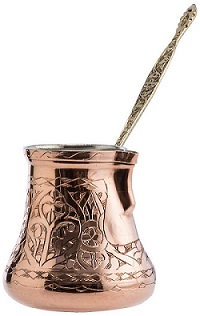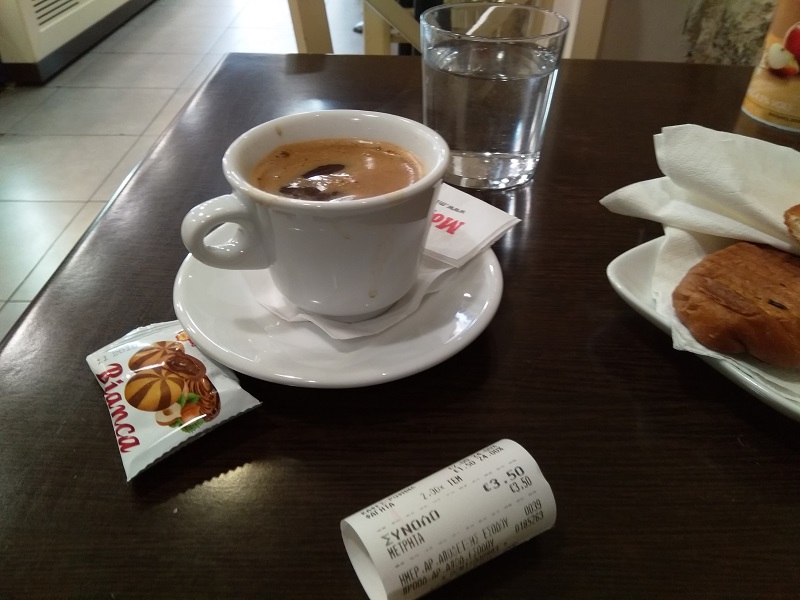“What is a Greek coffee I asked,” as I stared down at the menu. The girl behind the counter smiled and said, “It’s like a Turkish coffee.”
“Oh,” I said. “What’s a Turkish coffee?”
Thus began my introduction to Greek coffee. I was in a snack bar at Monastiraki Flea Market and although I’ve been to several coffee shops in Athens this was the first time I’d noticed Greek coffee on the menu.
The girl behind the counter gave me a brief explanation about Greek coffee and I was so intrigued I had to try it.
She asked me if I wanted sugar. I wasn’t sure. I sometimes drink white coffee with sugar. I take sugar with cappuccinos too, but I generally drink black coffee without any sugar at all. I asked the girl how Greek coffee is normally served. She said you have to drink it black so I told her not to bother adding any sugar.
I took a seat and watched the girl get to work making my cup of Greek Coffee. Although the snack bar had a nice modern-looking coffee machine, she didn’t use it. She used a small, long-handled pan-like vessel instead and placed it on a butane gas stove that looked just like the ones people use for camping.
I’ve since learned the pan-like vessel is a traditional Greek coffee pot called a briki. I’ve also learned a little bit about the history of Greek coffee and, from what I’ve managed to find out, Greek coffee and Turkish coffee are basically the same.

In fact, lots of countries seem to have their own version of it. A few of them include:
- Armeian coffee (Armenia)
- Bosnian coffee (Bosnia and Herzegovina)
- Cypriot coffee (Cyprus)
All the drinks are apparently similar and most of the countries that have this type of coffee claim to have created it.
Along with all the similar versions, Greek coffee is made with a finely ground coffee. It’s sometimes called a Turkish grind and it’s always brewed in a briki.
Unlike espressos and the other types of coffee you are likely to get in a Starbucks, an Italian coffee bar, or any other establishment that makes coffee with a coffee machine, Greek coffee is not filtered. The coffee grinds are poured into the cup along with the rest of the brew. That means the coffee needs a little time to settle before you drink it and it’s best not to drink too fast. The girl in the snack bar warned me about this and I’m very glad she did. After I’d sipped my way through two-thirds of the cup the remaining content was all coffee grounds. It had a sludgy texture and reminded me of mud. I got a little in my mouth and the texture felt a little like sand on my tongue.
Greek coffee has a strong flavour, the cup I was served also smelled a little different to the other types of coffee I’ve drunk in the past. It wasn’t an unpleasant odour, just unusual. The other thing about Greek coffee is it has a little foam on top. This is one of the signs of a traditional Greek coffee
Similar to the coffees you get in Italy, Greek Coffee is generally served with a glass of water. That can come in handy if you drink too fast and get a mouth full of sludge.
I have to admit, I enjoyed my first cup of Greek coffee and I will make a point of trying to drink some more. Now that my eyes have been opened to this type of coffee, as I travel from country to country, I plan to drink some of the other versions as well.
– – – – –
– – –
– – –
– – – – –
